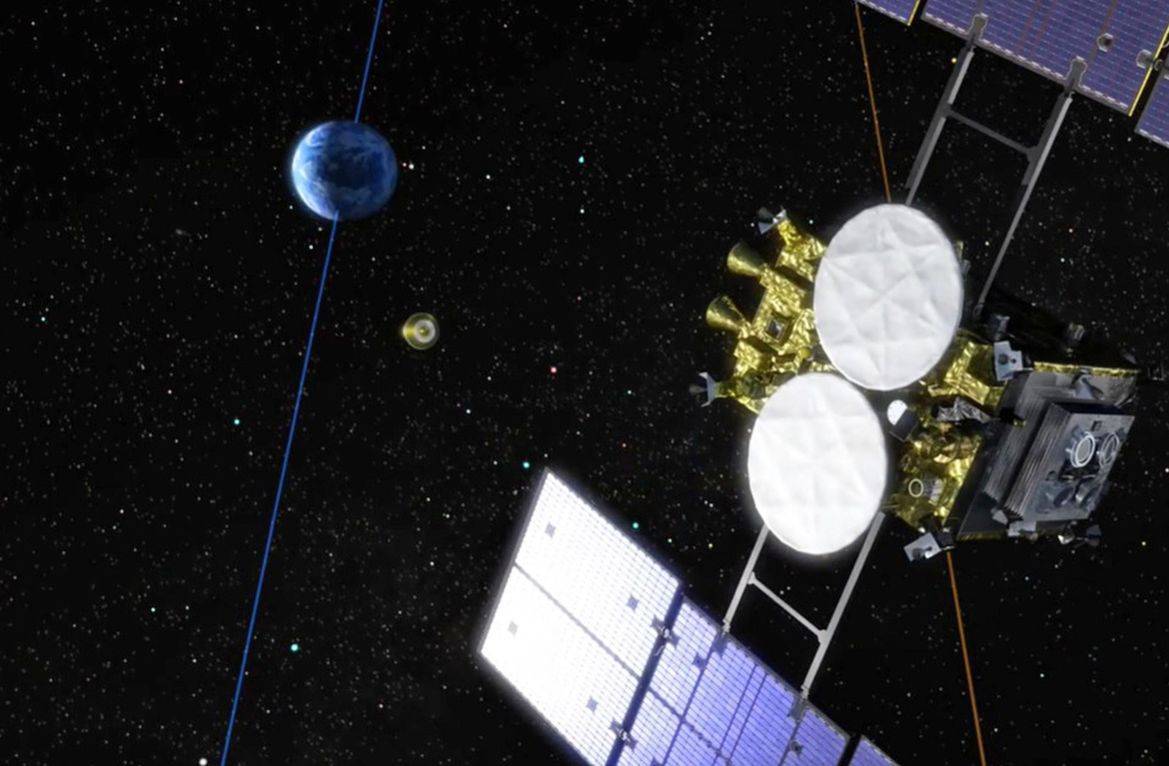1.05.2023

The Japan Aerospace Exploration Agency, or JAXA, is considering a new mission to collect samples from a small astronomical body, hoping to utilize the technology from the Hayabusa and Hayabusa2 asteroid explorer projects.
The government-affiliated institution set up a working group last year comprising those with experience operating the Hayabusa2 mission, and is in the process of deciding the structure of the planned new explorer spacecraft and its target celestial body. JAXA aims to launch the probe in the mid-2030s and achieve a sample return in the mid-2040s.
A comet moving between the orbits of Earth and Jupiter is viewed as the likely target for the new project. JAXA aims to collect samples of ancient materials that have maintained their state since the birth of the solar system.
In the Hayabusa and Hayabusa2 missions, the space probes gathered samples such as sand from asteroids and brought them to Earth.
The next-generation explorer is seen comprising a 500-kilogram main unit, responsible for the travel to and from the target body, and a 100-kilogram sub unit, which will conduct observations, land on the body and collect samples. Including fuel, the explorer is expected to weigh about 2 tons in total.
"Using a main unit and a sub unit makes it possible to go retrieve samples multiple times while lowering the risks," said JAXA professor Takanao Saiki, a core member of the working group. The Hayabusa2 landed on its target asteroid twice. But there had been internal debate at the space agency over whether it should conduct its second touchdown, due to concerns of crashing.
Separating the explorer into the main and sub units also eliminates the need to use expensive and durable parts for the sub unit. While travel to and from faraway bodies such as comets will take over 10 years, conducting observations of target bodies will only take about a year, meaning that the sub unit does not have to be made with expensive parts.
Using main units with a common structure for different missions would also lead to cuts in costs.
"This is a necessary effort for Japan, which has a limited budget, for conducting many explorations," Saiki said.
JAXA is planning to equip the next-generation explorer with instruments so that analysis can be conducted on the spot, instead of only after samples are brought to Earth. The Hayabusa2 craft succeeded in collecting gas from its target asteroid by making its capsule airtight, but the trip back to Earth resulted in a significant loss of information due to circumstances that included temperature fluctuations.
Also being considered by the agency is the use of radar to inspect the inside structure of the target celestial body as well as a seismometer.
But many technical challenges remain.
The next-generation explorer will aim for the area around Jupiter, which means that it will be far away from the sun and will need solar cells about 20 times larger than those for probes traveling to space closer to Earth so that it can maintain power. JAXA must develop ways to cut power use for the whole explorer and new batteries that are light and highly efficient.
Another issue is how samples collected by the sub unit will be delivered to the main unit. JAXA is considering making the sub unit redock with the main unit after it touches down on the target body or making the sub unit release a container of samples, which the main unit would then catch.
"It would be a waste not to use the technology from Hayabusa2, which was very successful, at all," Saiki said. "We must create a system to retain the capability for this type of exploration."
Quelle: The Japan Times
